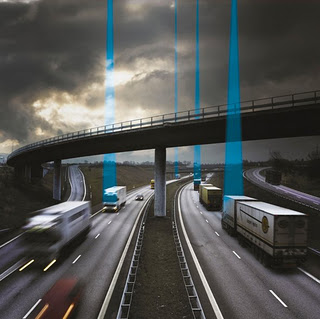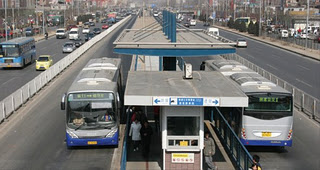
Mobility by means of transport of men and material is fundamental for economic growth, with its contribution for social development, improved lifestyle and wealth creation. Today we have the collective responsibility of “keeping the nation on the move”, in which technology and innovation play a critical role in providing efficient, safe, clean and seamless transport solution.
Sustained economic growth, higher infrastructure investments, faster industrialisation and large consumer spending in India have resulted in a spectacular growth in goods and passenger traffic. The growing vehicle population, coupled with rapid urbanisation, poses problems like traffic congestion, road accidents, increased travel time and the resultant loss of productivity, climate change impacting the environment, higher fuel consumption, etc.
Till early 1990s, vehicle availability in India was limited both in terms of volume and models because there were just a handful of manufacturers with limited product portfolios in a controlled economy. Subsequent to reforms, with the Government permitting 100 per cent FDI in the automotive sector, the doors were open for overseas auto majors to make their presence felt in the Indian market. With growing investments by both domestic players and MNCs, the auto sector started expanding with volume production in all segments. Further, accelerated infrastructural growth, particularly in respect of roads and highways, expansion in IT and telecommunication network, greater mobile connectivity and rapid globalisation could together provide excellent solution to the emerging mobility issues.
To address the increasing need for mobility on sustainable basis, planners and policy makers worldwide have been using a very powerful and effective tool, namely, Intelligent Transport Systems (ITS) that facilitates efficient and optimum utilisation of infrastructure resources and vehicular technologies.
ITS provides digital integration of various components of mobility, including roads, vehicles, goods, passengers, drivers and infrastructure, in a very intelligent way, thereby offering a completely new way of helping the society towards safe, efficient, secure and seamless transport system.
The key elements of the system are the road network and infrastructure, goods and passenger traffic, the human element and fuel and energy security. With an explosive growth in the number of vehicles and higher demand for mobility, there are many critical issues to be addressed, like optimum road utilisation, traffic management, improved traffic safety, vehicular pollution, global warming, dependence on fossil fuels by gradual migration to alternate fuels, etc.
In order to facilitate movement of goods and passengers, timely availability of information is absolutely essential for road users to plan their programme and maintain seamless connectivity. With the increasing usage of mobile phone, display systems and the Internet, there are now many options to stay connected.
Gathering details, exchanging information, carrying out analysis and offering quick information on real time basis by deployment of technology, it will give a major relief to everyone in terms of efficient planning, optimum use of resources and better social and business climate.
Thus, technology can play a vital role in transformation of mobility solutions and facilitate real time information flow for goods and passenger movements.
The real problem for road users is the ever-growing vehicular traffic with a restricted road network. All the more so with the constant migration of people from villages to towns and cities in pursuit of greener pastures. This adds to the demand for mobility. Despite best efforts, it is a challenging task managing the expanding road traffic.
Under these circumstances, ITS offers a powerful tool and an effective solution to address these issues. ITS comprises a number of technologies to facilitate information capturing, processing, communications, control, etc. These technologies are applied to the transportation system to save lives, minimise travel time, save money, improve fuel efficiency and reduce pollution.
The ITS technology, when implemented with the planned investment of infrastructure, will reduce traffic congestion and road accidents while making transport networks more secure. Users of public transport will have the latest information regarding bus arrivals/departures. Passenger car users can utilise the vehicle-based information system which communicates with the vehicles and infrastructure. Truck users will similarly have precise details about the location of freight and cargo, estimated arrival, etc. And goods transport operators will have real-time information about the logistics chain which facilitates secure and efficient movement of freight cargo. ITS services will also provide information about the safest and most efficient way of reaching specific destinations.
There are certain key areas where ITS services could be operational:
A: General :
Advanced Navigation System is aimed at route guidance and destination-related data to users and drivers. It also improves safety and increases driver comfort and provides assistance for safe driving related to road conditions, danger warning, automated highway systems, lane changing, parking, road intersection, rail-road crossing, unsafe spots warning, etc.
Multiple fee payment: A smart card issued to all users is a very convenient cashless transaction system by which one could make payments for e-tickets, parking fee, RTO fees, traffic fines, toll, etc. This card could also support multi-modal transport systems.
Safest road: Smartway 2007 initiative in Japan is working towards state-of-the-art ITS services to make roads the safest and accident-free. The integrated system will provide information about road congestion, traffic situation, road merging, speed restriction, etc.
Telematics: Telematics, an integral part of ITS, is a combination of telecommunication & informatics and in-vehicle electronics. Volvo cars offer wireless communication products in telematics. Basic navigation, tracking vehicle, data retrieval, etc., are some of the offerings. Addition of vision enhancement, pre-crash restraint deployment and collision avoidance is also underway.
As per Volvo Technology Corporation, Transport Telematics systems will provide advantages in terms of driver comfort, transport efficiency and improved safety, and will address environment benefits.
Volvo Trucks have developed Dyna Fleet which is an in-vehicle telematics device to provide information on driver information, driver activity management, vehicle information, GSM communication, etc.
B: Vehicle Based Systems:
On-Board System: A standardised single on board system which is compatible with the system will facilitate uniform communication among all the services. This will offer seamless interface with road side units, road-vehicle communication systems.
GPS and GIS-based information: Precise information on accident-prone areas and traffic restrictions will provide real time data to travellers. The special receiver fitted on the vehicle will provide real time road and weather details.
C: Goods Transportation:
The freight information provided here relates to location of cargo trucks, electronic identification of vehicles to avoid delays at check posts, electronic payment at check posts, etc. The electronic toll collection system fitted on board will facilitate payments at toll stations based on vehicle types, category, etc. This will also eliminate congestion at toll gates too.
Information is also provided under the system about fuel stations, rest and parking areas found essential for vehicle users, particularly truck drivers, to improve operational efficiency.
ITS could also be effectively applied for fleet monitoring, service-related issues, hazardous goods tracking, etc.
D: Passenger Transportation:
Availability of traffic data, pattern and flow details on real time basis will help all the road users to plan their travels and minimise congestion.
The information would include various possible modes of travel, estimated time for travel as well as for reaching the destination, guiding passenger car users to parking slots, etc.
High Capacity Bus Rapid Transit Services: The biggest challenge lies in using the existing road infrastructure resources innovatively and integrate it intelligently to achieve seamless urban traffic flow.
Bus Rapid Transit (BRT) consists of high capacity buses with additional doors, convenient boarding platform, safer entry-exit, higher average speed, e-ticketings and less stoppage timings. These buses operate in dedicated corridors with priority signalling at crossings to provide overall comfort for passengers.
Volvo took an initiative and popularised the BRT system through corridor management during the 1970s in the city of Curitiba, Brazil, which has now become a global reference. Beijing is now planning to introduce the system in a big way.
The integrated system could also help in providing vital data on air quality.
E: Road and Traffic Management:
Optimised Traffic Management is designed for area-specific planning, traffic flows, emergency situation handling, disaster management, handling traffic congestion, special event management, lane and route controls, etc.
Road Management by road survey, maintenance, hazardous goods transportation, special lanes for high density traffic, monitoring overloaded vehicles, alternate route management, etc.
Public Transport Support by facilitating trucks, buses, taxis, etc., based on urgent requirements, Bus-On-demand, integrated Bus rapid Transit systems, smart cards, e-ticketing, real time bus timings, etc.
Deeper research about traffic pattern, road and vehicle conditions to study, analyse and evolve futuristic strategies.
Supporting pedestrians with routes, accident avoidance, refuge places, elderly persons and visually challenged persons.
F: Two-Wheeler Flow Management:
There is also provision for control of two-wheeler traffic on roads as in cities like Bangalore with high two-wheeler population. It would be so controlled as to ensure sales and smooth flow of traffic, reducing congestion to a great extent.
In fact, Taiwan with the highest two-wheeler population in the world has seen good success from ITS intervention with specific measures like lane control, turn zone, speed control, signal control, etc.
Intelligent Vehicles Safety Systems (IVSS), Sweden
Vision Zero for Sweden is aimed at achieving zero fatalities and zero serious injuries. Sweden has a long tradition of safety in respect of cars, trucks, buses and roads. This has resulted in a number of road safety technologies, and has earned the country a special status in this regard.
IVSS is a unique public-private joint venture that aims at saving lives through application of intelligent technologies. Most current technologies focus on saving lives through crash safety improvements.
The IVSS Programme aims at shifting the emphasis from passive solutions to active systems. In other words, preventing problems from arising in the first place. IVSS uses IT and SMART technologies to minimise fatalities and injuries.
ITS therefore can act as a powerful tool to achieve seamless sustainable mobility in India which is emerging as one of the largest economies in the world. It can also make substantial contribution to the dream and vision of making Indian roads one of the safest in the world.
A Mechanical Engineer with 27 years experience in commercial vehicles industry, Mr. S.R. Venkatesan is Senior Advisor to Invest in Sweden Agency, Ministry of Foreign Affairs, Sweden, co-ordinating various investment opportunities and business proposals related to the automotive sector / IVSS.